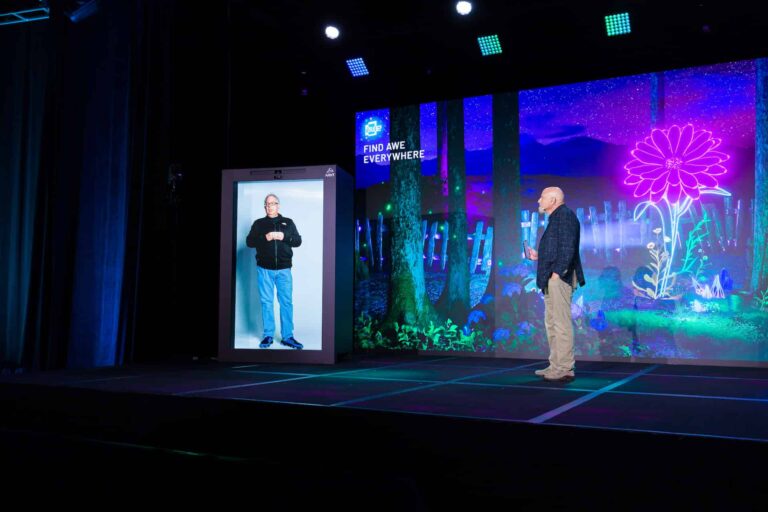
One of the valuable aspects of Augmented World Expo is the sheer volume of insights. It’s too much to capture in three days. So we spend weeks after the show disseminating all the nuggets we assembled while jumping from session to session (aided later by YouTube footage).
The latest bits we’ve been chewing on are Magic Leap founder Rony Abovitz’ many insights during a holographic interview with Charlie Fink. Among other things, he defined the rise and fall of the metaverse – at least as a concept and a term that captured the world’s imagination.
Aligned with our past writings on the topic, the metaverse – in the many years it will take to come to fruition – will be more of a gradual transformation of the existing web than the sudden revolution of a new force. The web has all the right foundational elements in its interoperability.
So if the metaverse does develop, it will be on top of those existing standards and protocols. Gradually, 3D content and experiences will colonize that web and acclimate consumers. That process has already begun if you consider MMOs and synchronous worlds like VRChat.
Co-opted and Conflated
But to do any justice to Abovitz’ insights requires his own words. Here’s the quote we captured from his session.
“[The name metaverse] got co-opted and attached to all these weird things. I think of the metaverse as the internet which no one can say is going away and all of generative AI is riding through it. And the internet has these amazing new endpoints: IOT, robotics, computer vision, AR, and VR.
I think of that internet as growing into something that is the spatial internet. When you think of it that way, none of it went away. All that happened with generative AI is that it made that collective that we call the internet much smarter, better, and enabled to hook up to all these cool endpoints.
So I think all the noise about the word metaverse is because certain companies may have co-opted that name and associated it with a very particular view, and that turned people off. […] If we think of it that way, it’s a word and a brand name that got damaged, not the actual underpinning system.”
Beyond the metaverse sprouting from the existing web, one of Abovitz’ key points here is the convergence of AI and XR. This is in direct response to the misguided hot takes often seen these days that AI has replaced the metaverse. In reality, they’re not mutually exclusive.
In fact, As Abovitz says elsewhere in the interview, AI is the technology that XR has been waiting for. As we’ve examined, AR can serve as the embodied and dimensional front end to AI, while AI can serve as the data backbone to AR. Other synergies will continue to be discovered.
Enjoy the Climb
All the above folds into Abovitz’ broader construct of XR’s lifecycle. Drawing on the analogy of the space program mission to land on the moon, we’re now in XR’s Gemini phase. This involves lots of planning and theory, leading up to the real action in the Apollo phase.
For XR, the Apollo phase won’t likely be reached until closer to 2030. And it will be characterized by the achievement of all-day wearable AR glasses without the crippling design compromises seen today. Getting there, he says, isn’t just about money but time and engineering challenges.
And those things take time. Human innovation is slow and requires several progressive cycles. With XR especially, you can’t take shortcuts, as it involves a dizzying array of technologies including computing (Moore’s Law bound), optics (non-Moore’s Law bound), and brain science.
It’s also a matter of consumer expectation. They’re accustomed to mature devices like PCs and smartphones that perform thousands of functions and use cases. XR headsets are far less capable in terms of the advanced states and ecosystem richness to be all-in-one devices.
But though all the above will represent a long journey to XR’s fully actualized self in the Apollo phase, we’ll still realize worthwhile fruits in the Gemini phase. Like the gradual development of past technologies like the PC and smartphone, says Abovitz, we’ll enjoy the climb.
For more color, see Abovitz’ full interview with Charlie Fink below…

